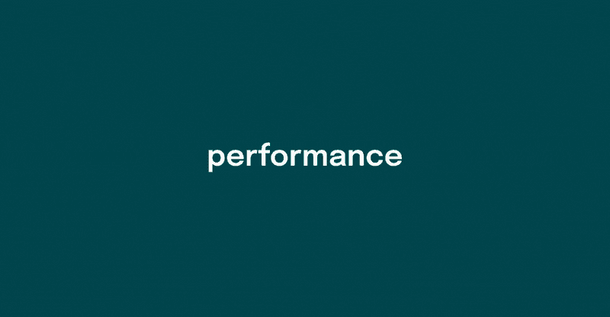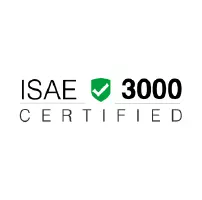What does it mean to democratize knowledge?
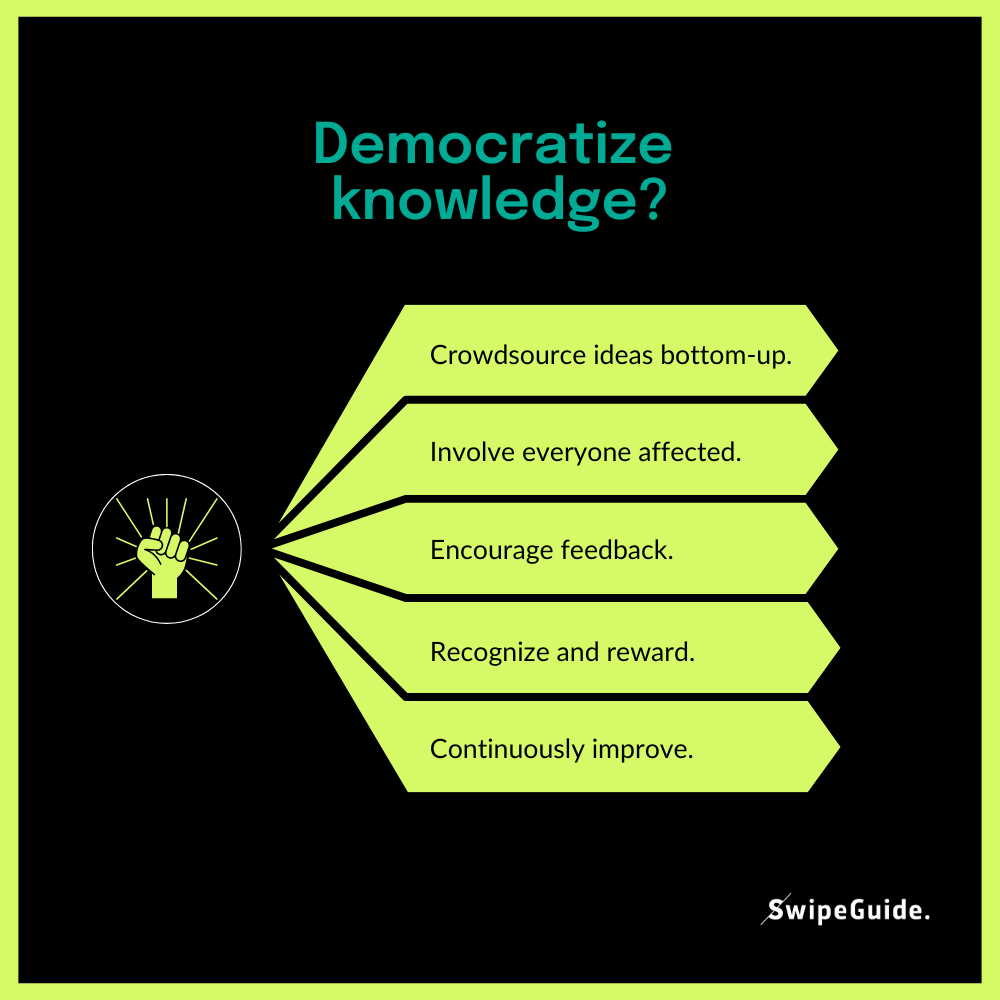
The problem with top-down.
Traditionally, most businesses have followed a similar organizational structure.
Decisions are made by a small number of people and these decisions impact the many. This is known as the top-down structure and is only effective in situations where “there is a set of clear rules and only a single solution.”
In the complex and fast-paced world of manufacturing, there is rarely ever one solution to a problem.
In fact, this idea goes against the very idea of lean manufacturing and continuous improvement.
In manufacturing, top-down decision-making is not the best way to go.
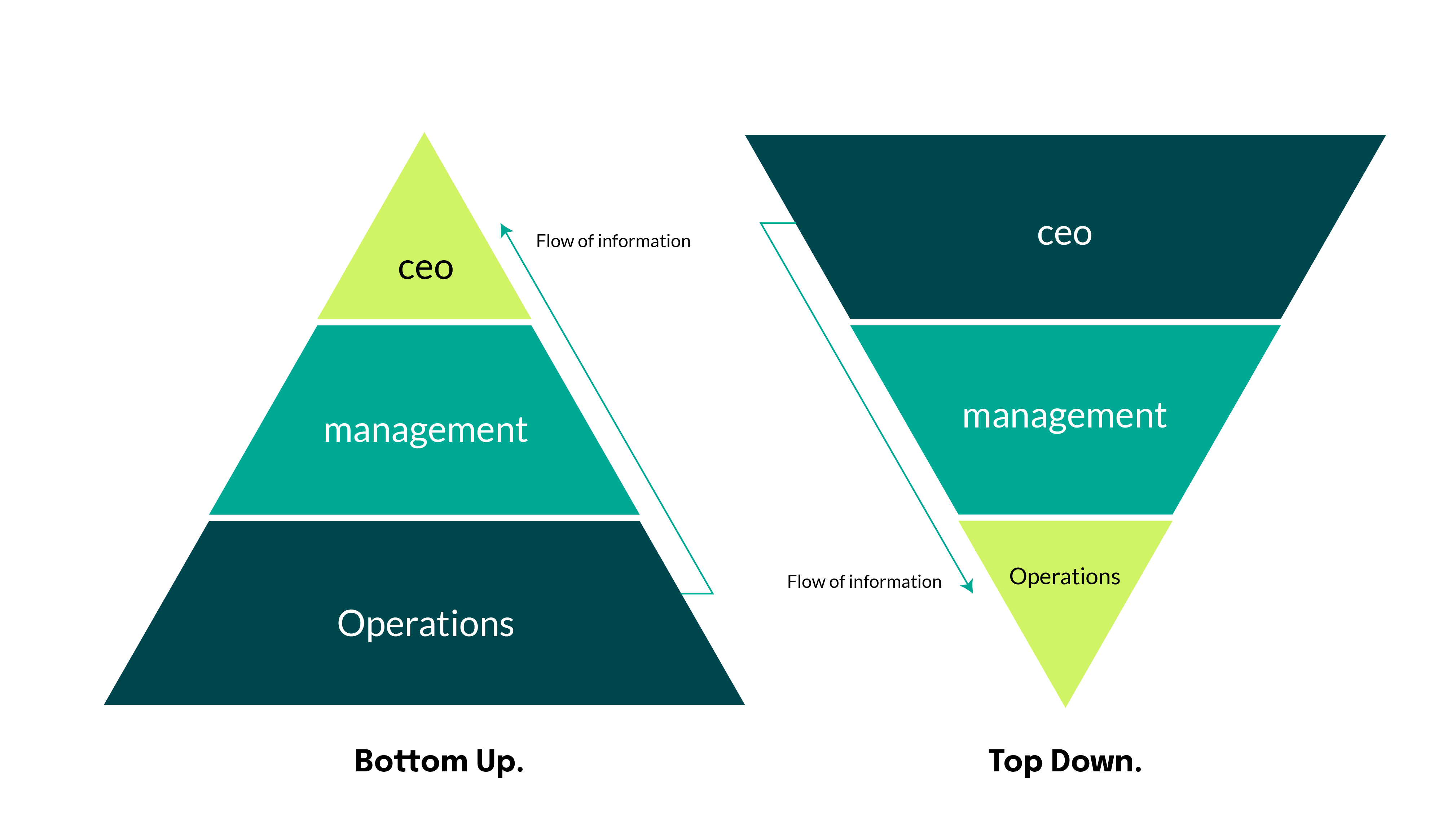 Flow of information: Bottom up (left) vs. top-down (right)
Flow of information: Bottom up (left) vs. top-down (right)
Bottom-up lean philosophy.
The familiar projects of Total Productivity Management (TPM), Training within Industry (TWI), and lean manufacturing started by valuing the worker.
These initiatives reimagined worker-focused training on the shop floor as a valuable opportunity to increase:
- Productivity
- Efficiency
- Product quality
- Motivation
Lean manufacturing encourages strategic thinkers to democratize knowledge as a way to increase operational excellence.
Lean pioneers in the 1960s discovered that a dependance on the many rather than the one made an irreversible impact - not only on the work being done, but on the structure of the company itself.
👉 PS. We've collected our favorite Kaizen quotes here.
Emphasis was placed on:
- Collective learning
- Proper education and training
- Effective distribution of knowledge.
Successful implementation revealed just how powerful a resource the teams on the shop floor could be.
In lean manufacturing, employees performing tasks are asked to continuously analyze processes and their own methods of working in order to find problems and develop solutions.
These solutions are then incorporated back into a standard way of working.
Improvements start on the shop floor.
Progress is evident when knowledge is...
- Shared with other workers in order to make higher quality, more efficient work for all.
- Incorporated directly into management techniques and used to create effective, standard work.
The success of lean manufacturing techniques in the 20th century was an undeniable use-case for the success of democratized knowledge and a bottom-up way of working.
Share the knowledge of your experts.
.png?width=1200&height=627&name=democratize%20knowledge%20(2).png)
This reimagining of the top-down structure is known as the “bottom-up” way of working, and is a working proof of democratized knowledge in action.
It’s as simple as the name makes it sound.
While CEOs still lead the way by developing overarching business strategies, decision making influence has been shifted to those who work with a product on a daily basis. These are frequently the individuals who assemble or produce on the factory floor - think of the employee who assembles the car you drive.
In a bottom-up approach to manufacturing...
- Employees are considered the primary source for insights
- Knowledge flows all ways without restrictions.
- Inspiration and ideas can be exchanged across teams.
- The responsibility of leadership is focused on facilitating the needs of these impact-makers, adjusting business strategy accordingly, and making decisions regarding business positioning and finances.
This shift is revolutionary (and particularly effective) because it moves the focus of knowledge capture and generation to the people who have the most expertise and need it the most.
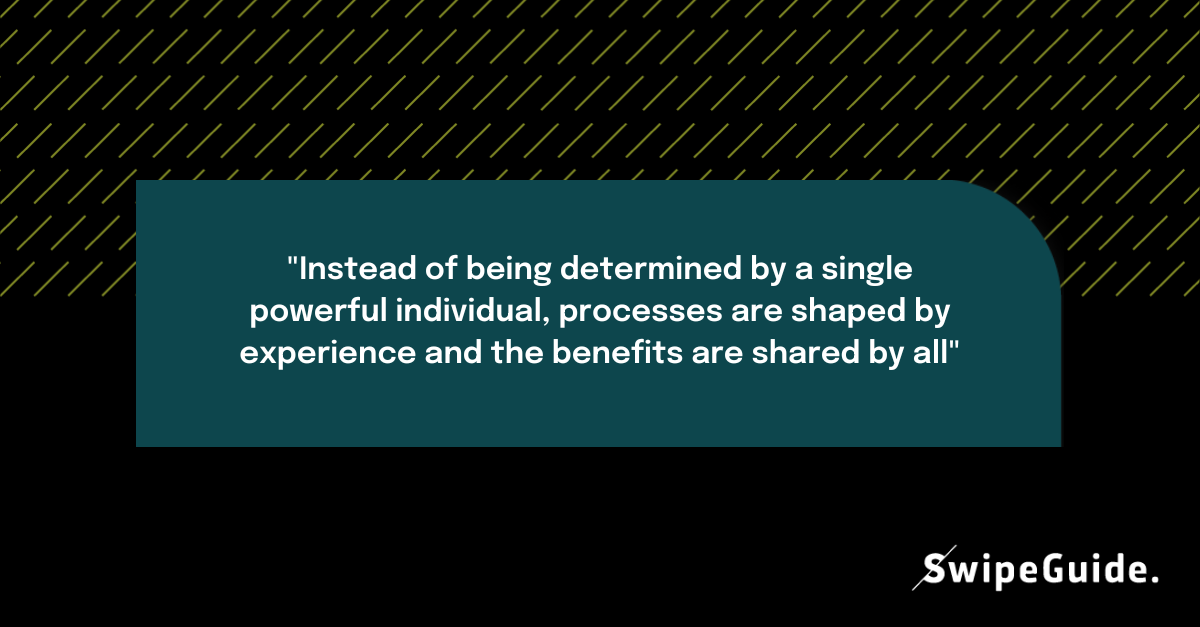
Bottom-up and lean for the 21st century.
Close to 60 years after the birth of lean manufacturing, the practices of TPM and TWI need to be updated for a changing industry.
- Digitalization is the new norm.
- Processes (both human and automated) are demanding more and more efficiency from those that execute them on a daily basis.
- Strict manufacturing tolerances and quality controls mean that there is very little room for error.
- Companies need a way to efficiently democratize knowledge and bring the benefits of this lean, bottom-up structure into the digital factory.
Digital solutions that embrace a lean and bottom-up way of working are an agile way to restructure the way your shop floor operates. They embrace the spirit (not to mention the benefits) of lean manufacturing in a way that keeps pace with the world around us.
Crowdsourced digital work instructions and SOPs are an incredibly effective solution to democratizing knowledge and embracing a true mindset of lean manufacturing.
No longer buried in a counterintuitive organizational structure, the skills and learnings of your team are captured in a shared body of practical knowledge.
This allows for the constant re-evaluation and refinement of processes and procedures.
Want to learn more?
👉 Empowering a Culture of Operational Excellence.
👉 Inspirational Kaizen Quotes to Motivate Your Team.
👉 Gain the Benefits of TPM Manufacturing with Frontline Knowledge.

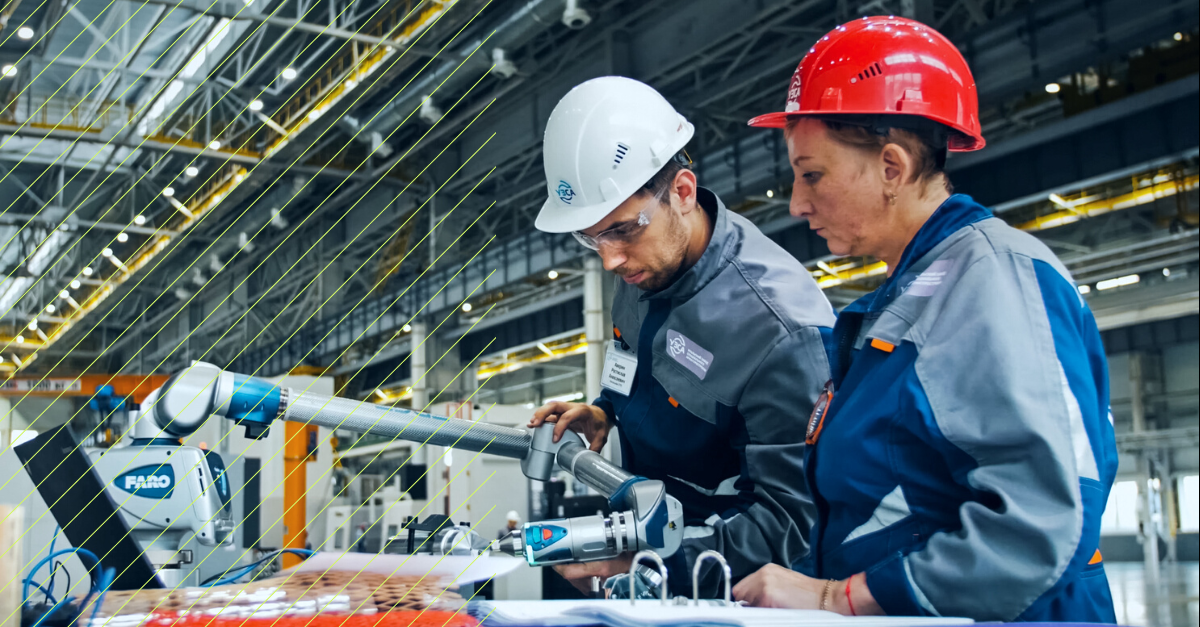
-png.png?width=685&height=358&name=kaizen%20quotes%20(1)-png.png)
.jpg?width=305&name=20210420_Swipeguide_002_%20(2).jpg)

